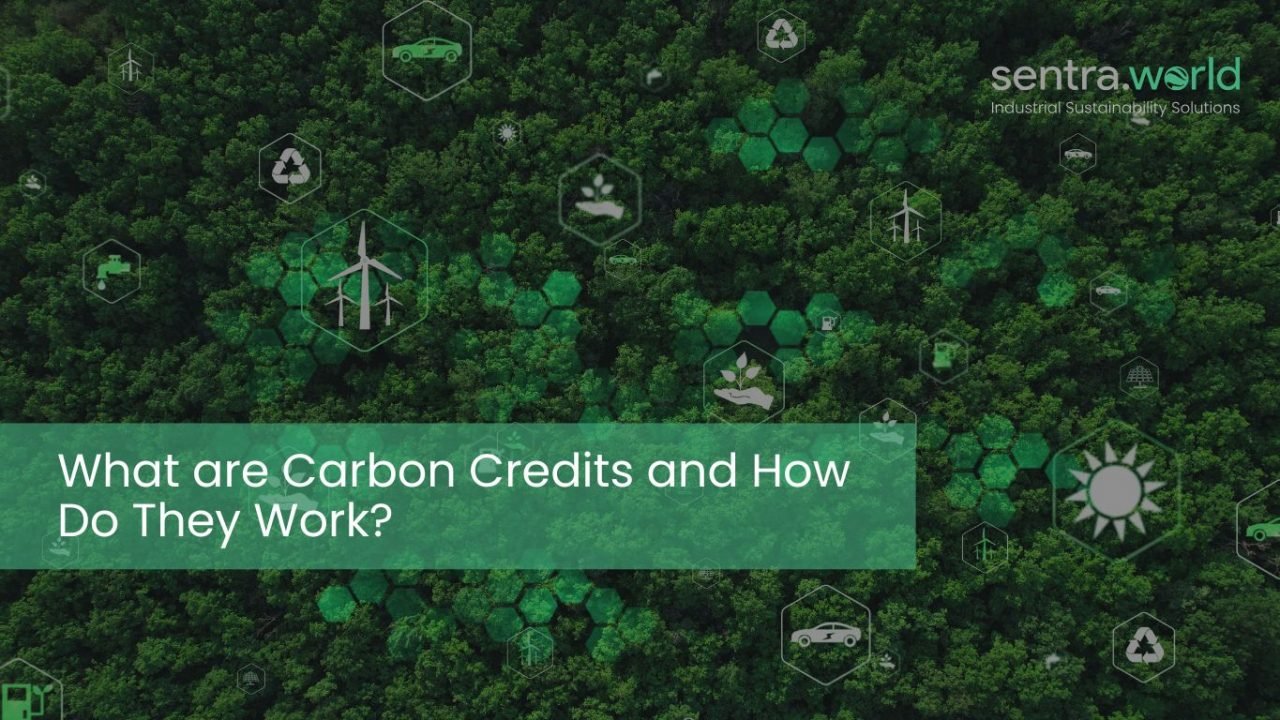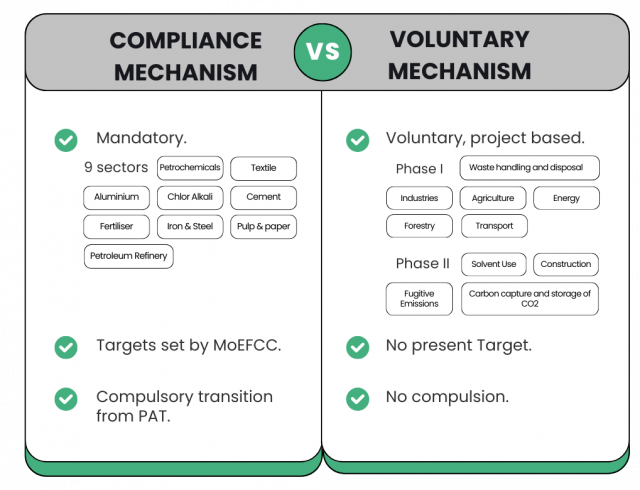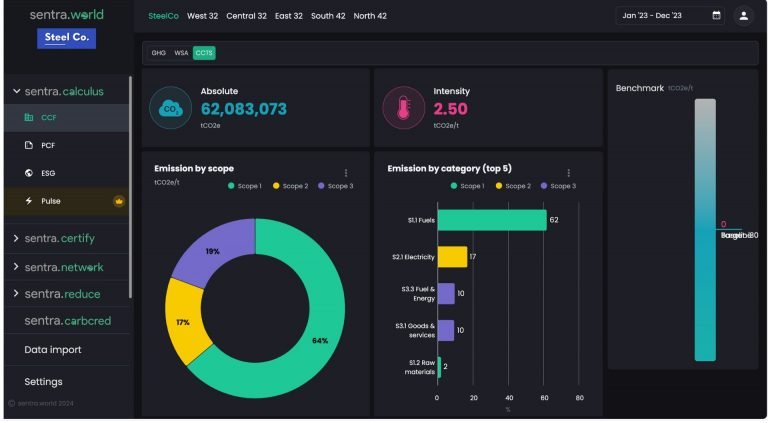- Carbon Credits
What are Carbon Credits and How Do They Work?

The recently concluded COP29 in Baku marked a significant milestone in the global fight against climate change, with the acceptance of a new global carbon market framework. This agreement aims to enhance international cooperation in reducing greenhouse gas emissions and facilitating carbon trading across borders. As nations grapple with the urgent need to address climate change and strive to meet ambitious net-zero targets, understanding the concept of carbon credits and their role in mitigating greenhouse gas emissions has become more important than ever. In this blog, we will unravel the intricacies of carbon credits, starting with their global context, diving into the emerging Indian carbon market, and concluding with insights into how platforms like sentra.world empower industries to navigate this complex landscape.
- What are Carbon Credits?
- How Is India Integrating Carbon Trading into Its Climate Strategy?
- What is the Carbon Credit Trading Scheme (CCTS)?
- Which Institutions Are Involved in India’s Carbon Credit Trading Scheme (CCTS)?
- How Can sentra.world Empower Steel Companies in Carbon Credit Trading?
- Conclusion
What are Carbon Markets?
The carbon market operates by enabling the trade of carbon credits, which represent the reduction or removal of one metric ton of CO2 equivalent (CO2e) from the atmosphere. This market is categorized into two types:
1. Compliance Carbon Markets: Compliance carbon markets, also known as regulatory carbon markets, are government-mandated systems designed to regulate and reduce greenhouse gas (GHG) emissions. Under this mechanism, governments set specific emission caps for various industries, defining the maximum permissible carbon emissions for companies operating within those industries. To comply, companies must manage their emissions within the allocated limits. If a company exceeds its limit, it must purchase allowances or credits from others who have emitted less than their allotment. This creates a market-driven approach to encourage emission reductions while maintaining economic flexibility.
Globally, the largest compliance markets exist in regions like the European Union, China, Australia, and Canada, where stringent regulations are in place. These markets are expanding, with new initiatives recently launched in India as CCTS, Pakistan, and the UAE.
2. Project-Based Carbon Markets: Project-based carbon markets operate differently from compliance mechanisms by enabling companies to offset their emissions through investments in specific environmental projects. These projects focus on reducing, avoiding, or removing greenhouse gas (GHG) emissions and provide carbon credits as a reward for their impact.
Credits in project-based markets are issued across eight key project categories:
Renewable Energy: Projects generate clean energy to replace fossil fuels. Over 32% of all voluntary market credits come from renewable energy, primarily grid-connected projects like wind (49%), hydropower (33%), and centralized solar (15%).
Agriculture: Initiatives include methane reduction in paddy fields and improved irrigation practices. Methane management (78%) and rice emission reduction (17.5%) dominate this category, with the US and China leading credit issuance.
-Transportation: Representing 1% of registered projects, this category focuses on energy-efficient public transportation and EV charging infrastructure.
Industrial and Commercial:Includes waste heat recovery, energy efficiency, and coal-mine methane capture projects. Major contributors are the US, China, and Germany.
Chemical Processes: Primarily involves recovering and destroying ozone-depleting substances, with over 90% of projects originating in the US.
Carbon Capture and Storage (CCS): Focuses on capturing and storing CO₂. While the number of projects is low, this sector is expected to grow due to advancements in carbon capture technologies.
Waste Management: Projects center on landfill methane flaring or reuse. The US and China host two-thirds of such projects.
Forestry and Land Use: Emphasizes ecosystem restoration through afforestation, forest management, and wetland restoration. This category generates the highest share of credits, predominantly from the US, Indonesia, Brazil, and Peru. Project-based carbon markets provide flexibility for organizations to meet their climate goals while fostering innovation in environmental sustainability.
The United Nations Clean Development Mechanism (CDM) has been instrumental in the evolution of project-based carbon markets. Established under the Kyoto Protocol, the CDM allows emission-reduction projects in developing countries to earn Certified Emission Reductions (CERs), which can be traded or used by industrialized nations to meet their compliance targets. This mechanism has catalyzed investment in renewable energy, energy efficiency, and sustainable land-use projects, especially in developing regions. By creating a standardized framework for monitoring, reporting, and verification (MRV), the CDM ensured the credibility and environmental integrity of project-based carbon credits. Furthermore, it has supported sustainable development by transferring clean technologies and creating local economic benefits. The CDM’s influence extends to voluntary markets, providing a foundation for project methodologies and credit issuance that continue to drive innovation and trust in carbon offset projects worldwide.
3. Voluntary Carbon Markets (VCMs): The Voluntary Carbon Market (VCM) operates differently from compliance-based systems as it is entirely voluntary. In this market, there are no government regulations or mandates forcing companies or individuals to purchase carbon credits or offsets. Instead, participants choose to engage in the VCM because they recognize the value of carbon credits in achieving their sustainability goals, such as becoming carbon neutral. In the VCM, companies, organizations, or even individuals invest in carbon offset projects, such as renewable energy initiatives, reforestation efforts, and methane capture systems, to counterbalance their own emissions. This voluntary approach is driven by a variety of motivations, including corporate social responsibility (CSR), reputational benefits, meeting internal sustainability targets, or responding to consumer demand for environmentally conscious products and services.
What Are Carbon Credits and What Is One Carbon Credit Equal To?
Who can Issues Carbon Credits?
How Is India Integrating Carbon Trading into Its Climate Strategy? ?
Project-Based Carbon Market and CDM
India has been a global leader in project-based carbon markets, especially under the Clean Development Mechanism (CDM), established by the Kyoto Protocol. Indian industries have the second-largest number of registered CDM projects globally, showcasing their active participation in carbon offset initiatives. These projects involve renewable energy, energy efficiency, and sustainable agriculture, among others, generating significant revenue while reducing emissions. The CDM framework has not only helped Indian industries familiarize themselves with carbon trading but also created a foundation for large-scale project-based market mechanisms.
What is the Carbon Credit Trading Scheme (CCTS)?
What are the key objectives of the CCTS?
What are the Compliance and Offset Mechanisms Under India’s Carbon Credit Trading Scheme (CCTS)?
1. Compliance Mechanism: This is a mandatory program for energy-intensive industries, where the government sets greenhouse gas (GHG) emission intensity targets (measured as emissions per unit of output). Registered entities identified as “obligated entities” must comply with these targets.
The Bureau of Energy Efficiency (BEE) identifies sectors with GHG reduction potential and recommends inclusion in the Indian carbon market. It also suggests sector-specific emission intensity targets (in tCO₂e per unit of output) after evaluating technological feasibility and implementation costs. Based on these recommendations, the Ministry of Power finalizes the targets and forwards them to the Ministry of Environment, Forest, and Climate Change for notification under the Environment Protection Act, 1986. Entities achieving emission levels below their targets receive Carbon Credit Certificates (CCCs), while those failing must surrender or purchase certificates to cover their shortfall. The existing Perform, Achieve, and Trade (PAT) scheme will transition gradually into the CCTS, starting with nine sectors: Aluminum, Chlor-Alkali, Cement, Fertilizer, Iron & Steel, Pulp & Paper, Petrochemicals, Petroleum Refinery, and Textiles, with more sectors to follow.
How are greenhouse gas (GHG) emission intensity targets determined?
What is a compliance year?
What happens if an obligated entity exceeds its GHG emission intensity target?
What must an obligated entity do if it fails to meet its GHG emission intensity target?
How is the number of CCCs calculated for surrendering?
What is meant by “banking” of Carbon Credit Certificates?
Which Institutions Are Involved in India’s Carbon Credit Trading Scheme (CCTS)?
What are the key objectives of the CCTS?
How Can sentra.world Empower Steel Companies in Carbon Credit Trading?

